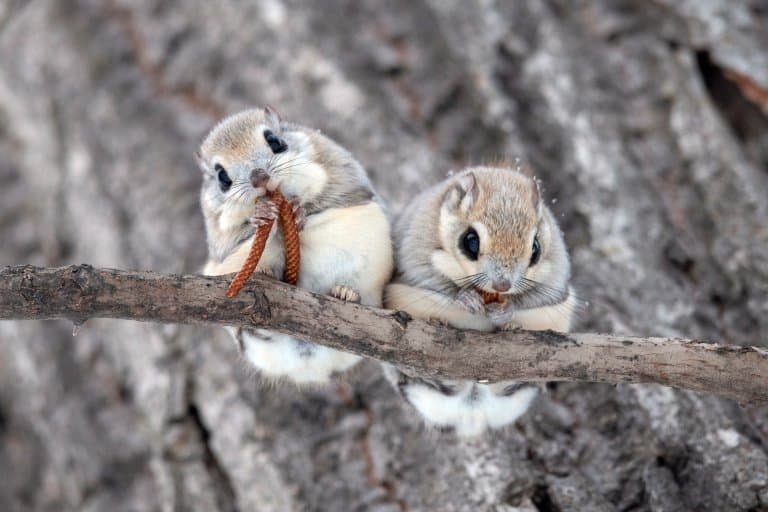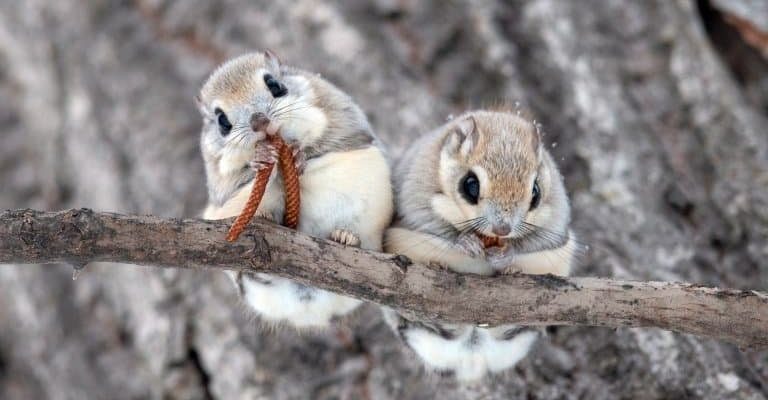
Flying squirrels aren’t just one species; there are several types, including the well-known Northern Flying Squirrel and the Southern Flying Squirrel. These fluffy-tailed animals are excellent gliders, thanks to a special membrane that stretches from their wrists to their ankles, allowing them to soar from tree to tree. Unfortunately, their beautiful gliding and adorable looks don’t guarantee their safety in the wild.
Understanding the Flying Squirrel Species
Flying squirrels belong to the family *Sciuridae* and are commonly found in North America and parts of Asia. There are about 50 species worldwide, but let’s focus on the ones here in the United States.
The Northern Flying Squirrel is primarily found in the northeastern U.S. and parts of Canada. It thrives in mature forests, where it can find large trees with cavities for nesting. On the other hand, the Southern Flying Squirrel is more widespread in the eastern U.S. and is often seen in urban settings.
You might be wondering what differentiates these two. While both have similar gliding abilities, the Northern Flying Squirrel is slightly larger and has a darker coat. Despite their differences, they share a common habitat preference: tall trees with abundant food sources like nuts and fruits.
Current Conservation Status
When we talk about whether the flying squirrel is endangered, the answer isn’t straightforward. The Southern Flying Squirrel generally isn’t considered endangered and maintains a stable population. However, the *Northern Flying Squirrel* is classified as vulnerable in several states due to habitat loss and fragmentation.
Habitat loss is a significant issue. As forests are cleared for urban development or agriculture, flying squirrels find themselves losing their homes. Moreover, logging operations can disrupt their nesting sites, making it harder for them to thrive.
You might think, “What’s the big deal?” Well, flying squirrels play an important role in their ecosystems. They help control insect populations and disperse seeds, promoting forest health. Losing them could disrupt the balance of their habitats.
Threats to Flying Squirrels
Several factors contribute to the vulnerability of flying squirrels. Let’s break these down one by one.
- Habitat Loss: As we mentioned, deforestation and urban development are major threats. When their home trees are cut down, flying squirrels are left scrambling for new nesting sites.
- Climate Change: Weather changes affect their food sources. For instance, if temperatures rise and seasons shift, trees may not produce nuts when squirrels expect them to.
- Predation: As their habitats shrink, flying squirrels become more susceptible to predators like owls and hawks. Less cover means fewer hiding spots and greater risk.
- Human Interaction: Pets and vehicles pose additional risks. Cats can hunt flying squirrels, while roads can be deadly if they need to cross to find food or mates.
Understanding these threats can help us devise better conservation strategies.
Conservation Efforts Around the Globe
So, what’s being done to save our gliding friends? Various organizations and government agencies are stepping up for flying squirrels’ conservation.
One major strategy is habitat restoration. This involves planting trees and preserving existing forests to ensure flying squirrels have safe nesting sites. In some regions, conservationists work to create wildlife corridors to help squirrels move between habitats without risking their lives.
Another effort is conducting research to monitor flying squirrel populations. By understanding their behavior and habitats, scientists can craft targeted conservation plans. Public education also plays a role. Teaching communities about the importance of flying squirrels and how to coexist with them helps garner support for conservation efforts.
Plus, some legislation exists to protect their habitats from excessive logging and urban development. Local governments can enforce policies to maintain forest areas where flying squirrels thrive.
How You Can Help Flying Squirrels
You might feel inspired to get involved and help flying squirrels in your area! Here are some practical ways you can make a difference:
- Support Local Conservation Groups: Join or donate to organizations focused on wildlife and natural habitat preservation.
- Practice Responsible Landscaping: If you have a garden, plant native trees and shrubs. This provides food and shelter for flying squirrels.
- Be Wildlife-Friendly: Keep your pets indoors at night, and use wildlife-friendly designs if building or renovating your home.
- Educate Yourself and Others: Share what you learn about flying squirrels with friends and family to raise awareness.
Every little effort counts. By getting involved, you contribute to the health and survival of these charming creatures.
Flying squirrels, with their whimsical gliding and charming personalities, remind us of the beauty of nature. While some species face challenges, efforts are underway to secure their future. By understanding the threats they face and how we can help, we’re taking steps toward a world where flying squirrels can continue to thrive.
So, as you sip your coffee and think about these delightful gliders, remember that your actions, no matter how small, can ripple into significant changes for the environment. Together, we can ensure that future generations get to enjoy watching flying squirrels dance through the trees.

